Legit soba tastes different from store-bought ones
At a soba appreciation workshop weeks ago, I tasted the best soba of my life. It was the kind of meal that ruins any other for you. My mind flashed to the soba I used to order at Japanese chain restaurants as a kid; its limp, out-of-the-packet nature became more acute in contrast to the soba masters’ fresh and springy noodles at the workshop.
As far as three-ingredient recipes go, soba may be one of the most complicated. Soba masters must take even the slightest things into account, such as the traffic of diners into their restaurant as the air changes with repeated openings of the door, affecting the dough. That’s one reason why many restaurants choose to serve fuss-free factory-made noodles. If you’re searching for legit, handmade soba, here are seven ways to tell if you’ve found it.
1. The noodles should have a high percentage of buckwheat flour
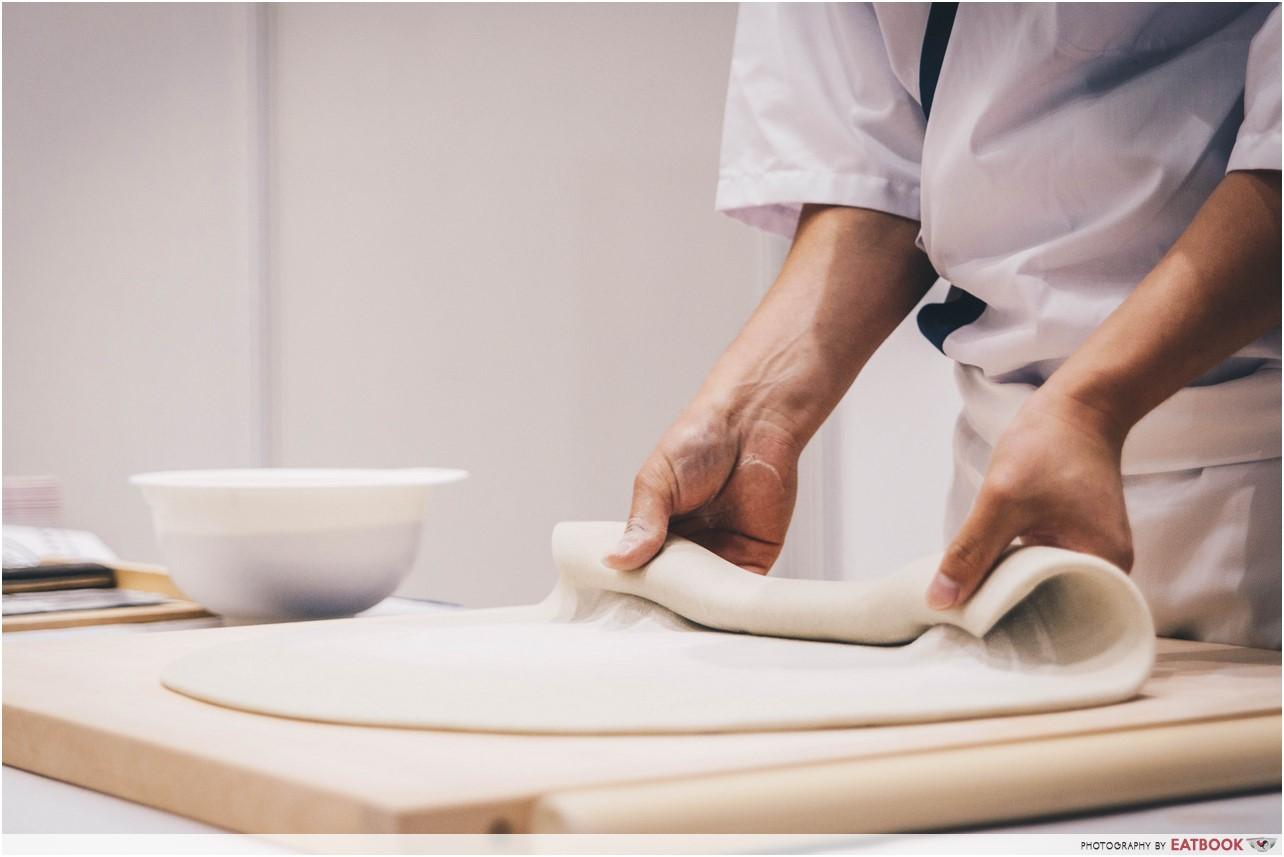
Originally, Japanese noodles were made entirely with buckwheat flour to give the noodles as much fragrance as possible. But making soba is one of the few occasions when giving 100% doesn’t yield an ideal result. Buckwheat is gluten-free, so pure buckwheat dough is limited in its elasticity, making it difficult to work with and forming soba that breaks apart easily.
Most soba is made from a mix of buckwheat flour and wheat flour, making them chewier and springer. Traditional Tokyo-style soba noodles have a ratio of eight parts buckwheat to two parts wheat flour, which is also the minimum percentage of buckwheat flour you should look out for.
2. The soba is handmade
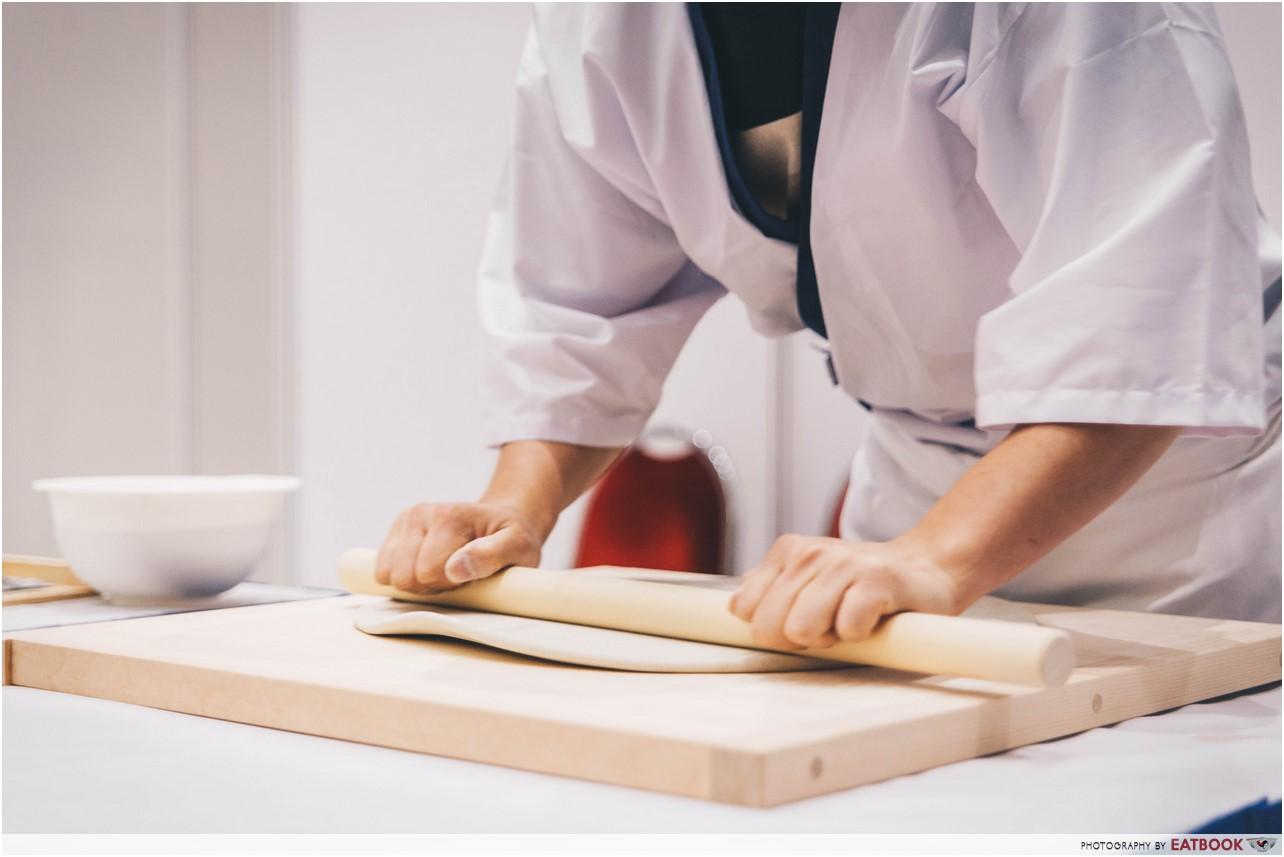
Turning a mound of dough into thin noodles requires a whole lot of rolling. A pasta machine-like dough roller would simplify things, but there’s a reason soba masters continue to dedicate decades to their craft using a special hand-rolling technique.
Using a rolling pin gives chefs control when they glide over the surface of the dough from all angles. This repeated pulling and stretching continues to knead the dough, making smoother noodles with an airy bite. In comparison, a machine typically only presses down on the dough and doesn’t smooth its surface as well, resulting in clumpier soba that also breaks more easily. So the next time you pass by a restaurant and catch a glimpse of their soba master making noodles by hand, it might be worth joining the queue.
3. The noodles have a nutty aroma and taste
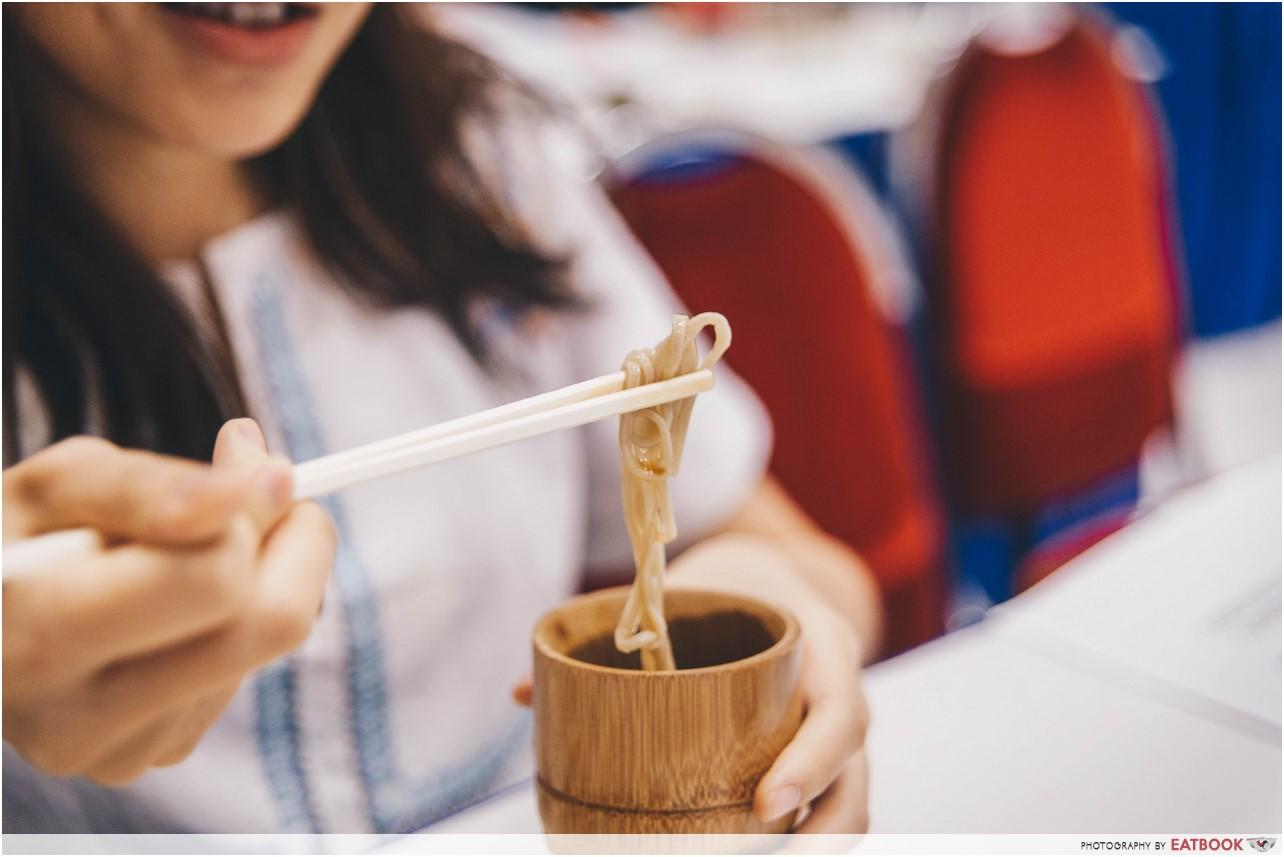
While buckwheat flour percentages don’t lie, the easiest way to verify you’re getting quality soba is from its aroma. Have a taste of the soba on its own, and if you can detect a nutty and earthy fragrance, it’s a sign that quality buckwheat flour is used. Should the noodles lack aroma – indistinguishable from a plate of pasta – they’re likely to be made with a high quantity of wheat flour and the dish is probably not worth a hefty price tag.
4. The soba has a springy, chewy centre
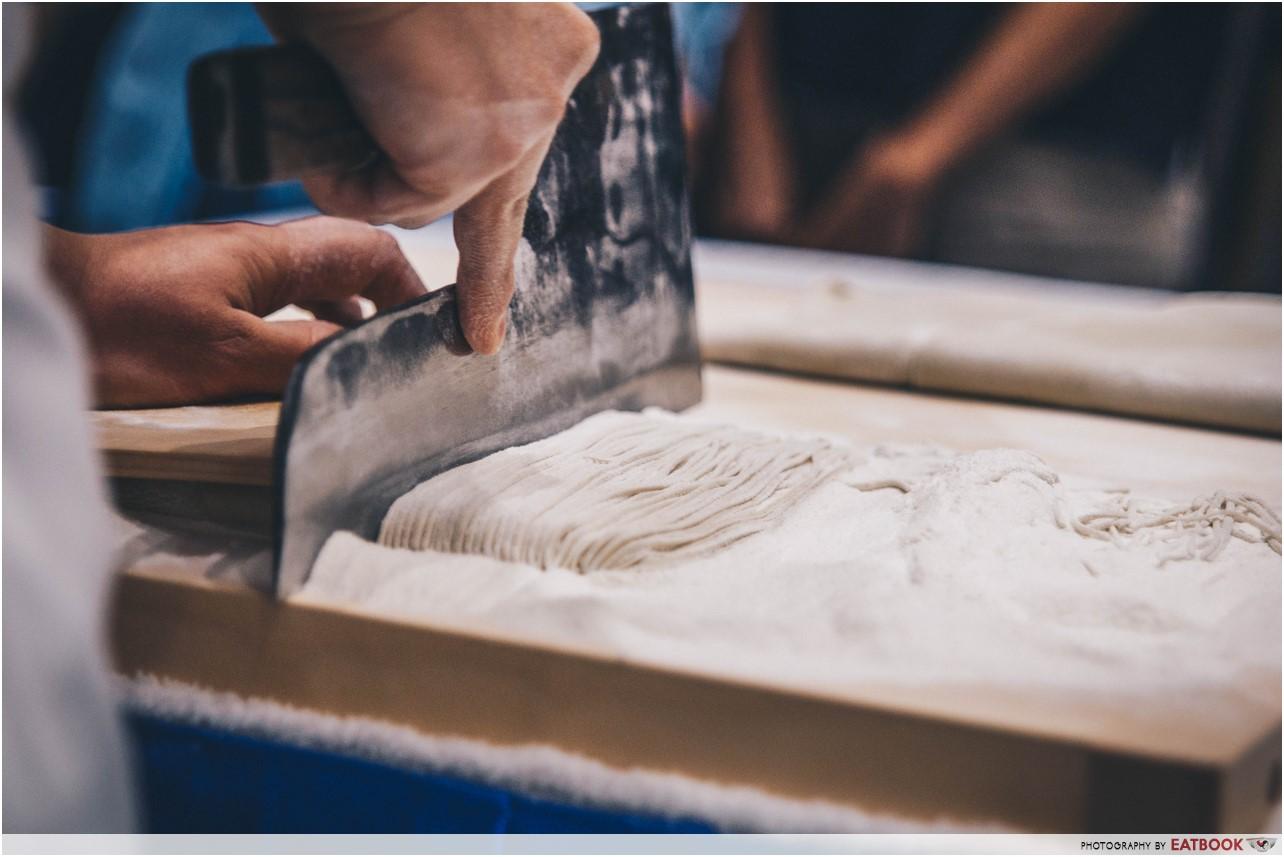
Another sign of high buckwheat content in soba is springy noodles. Good soba stands up to chewing and doesn’t break into mush when you press a strand between two fingers. The buckwheat flour is responsible for this texture.
5. The noodles are slurp-ably smooth
One of the most known features of Japanese dining etiquette is the practice of eating noisily, AKA slurping loudly while eating. Slurping the noodles helps you note their texture as you eat them. There’s a word for this in Japanese, nodogoshi, which translates to “good throat-feel”. Silkiness is a result of rinsing the soba in cold water after cooking to get rid of sticky starch that lingers on the noodles after cooking.
6. It’s paired with a tasty dipping sauce
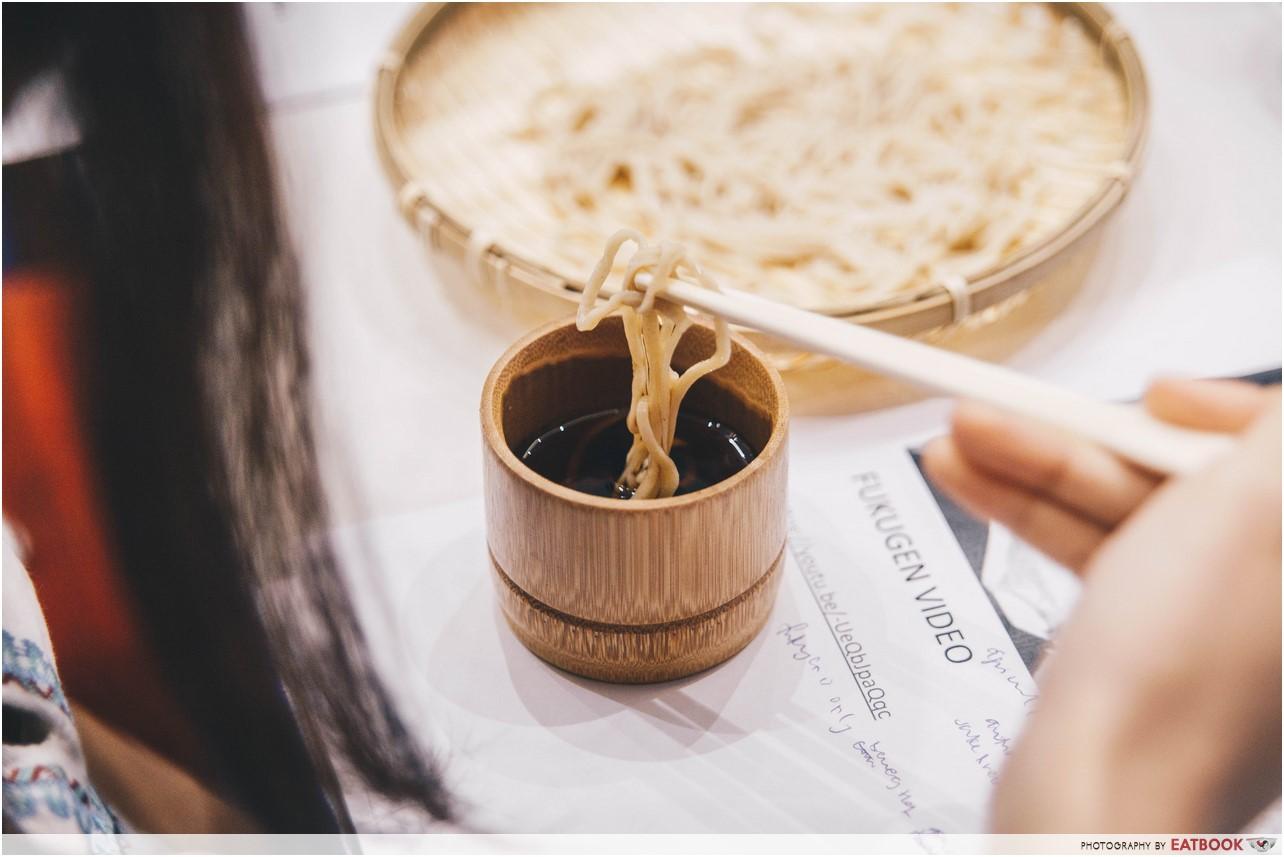
After the noodles are made, there are many ways of preparing them. The most commonly served soba in Singapore is zaru soba, which is chilled soba noodles served with a cold tsuyu dipping sauce. The dipping sauce is a combination of soy sauce and dashi, which is Japanese fish broth.
While the saltiness of tsuyu differs across restaurants, look out for tsuyu with an umami layer to its saltiness. Also, in order to taste the soba noodles, dip just a third of the length of the noodles into the tsuyu before slurping it up.
7. There’s soba-yu to enjoy afterwards
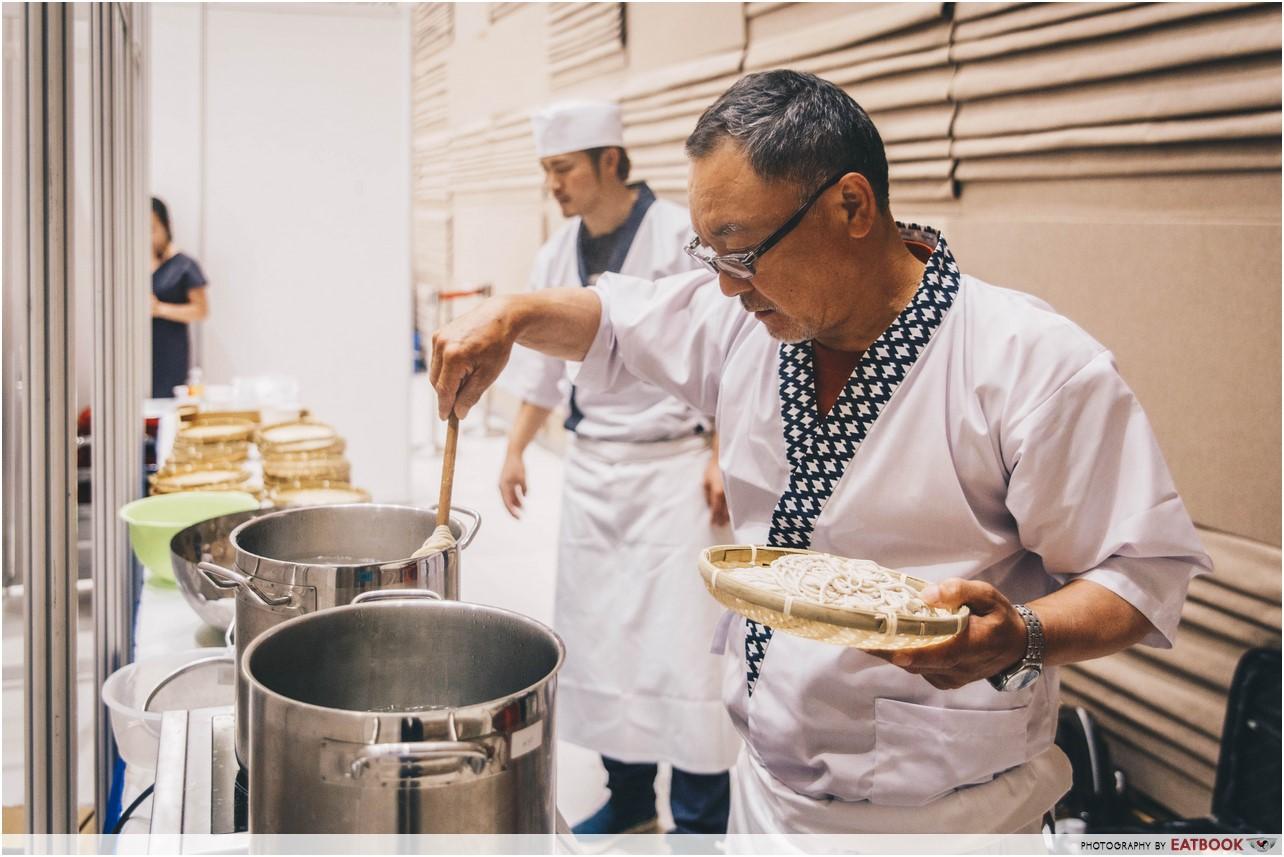
Soba-yu is the water that soba is cooked in. It’s meant to be drunk after you’ve finished your noodles. Not all restaurants will serve soba-yu though it should be available on request. This cloudy water is stocked with vitamins B1 and B2 as well as antioxidants, so it’s worth drinking a cup despite its blandness. You can also make a more palatable ‘broth’ by diluting leftover tsuyu with soba-yu.
Soba so good
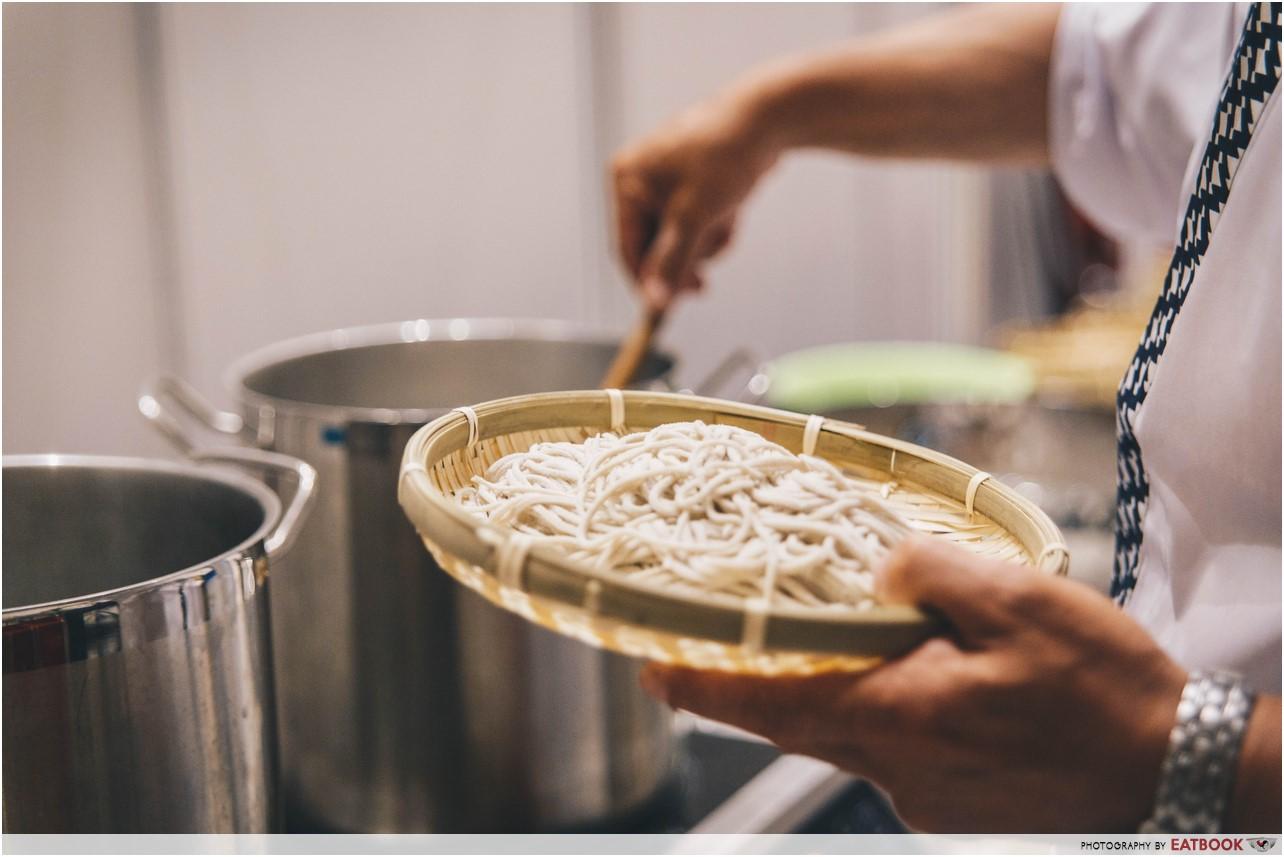
Beside ramen, soba may seem tame and perhaps even unattractive, but that might be because you’ve yet to try really good soba. Take these seven tips on your search for legit soba, and share with us your finds in the comments.
These tips were shared by soba masters Fumitake Yoshizawa and his son Yusuke Yoshizawa from Nagano, Japan. They co-hosted a masterclass on soba and sake organised by the Employment and Employability Institute (e2i).
The soba and sake appreciation masterclass was one of many held during e2i’s Taste of East Asia event, where e2i invited professionals from Hong Kong, Korea, Japan, Sri Lanka, and Singapore to share their expertise in curated masterclasses, and attendees could network with them and fellow trade professionals.
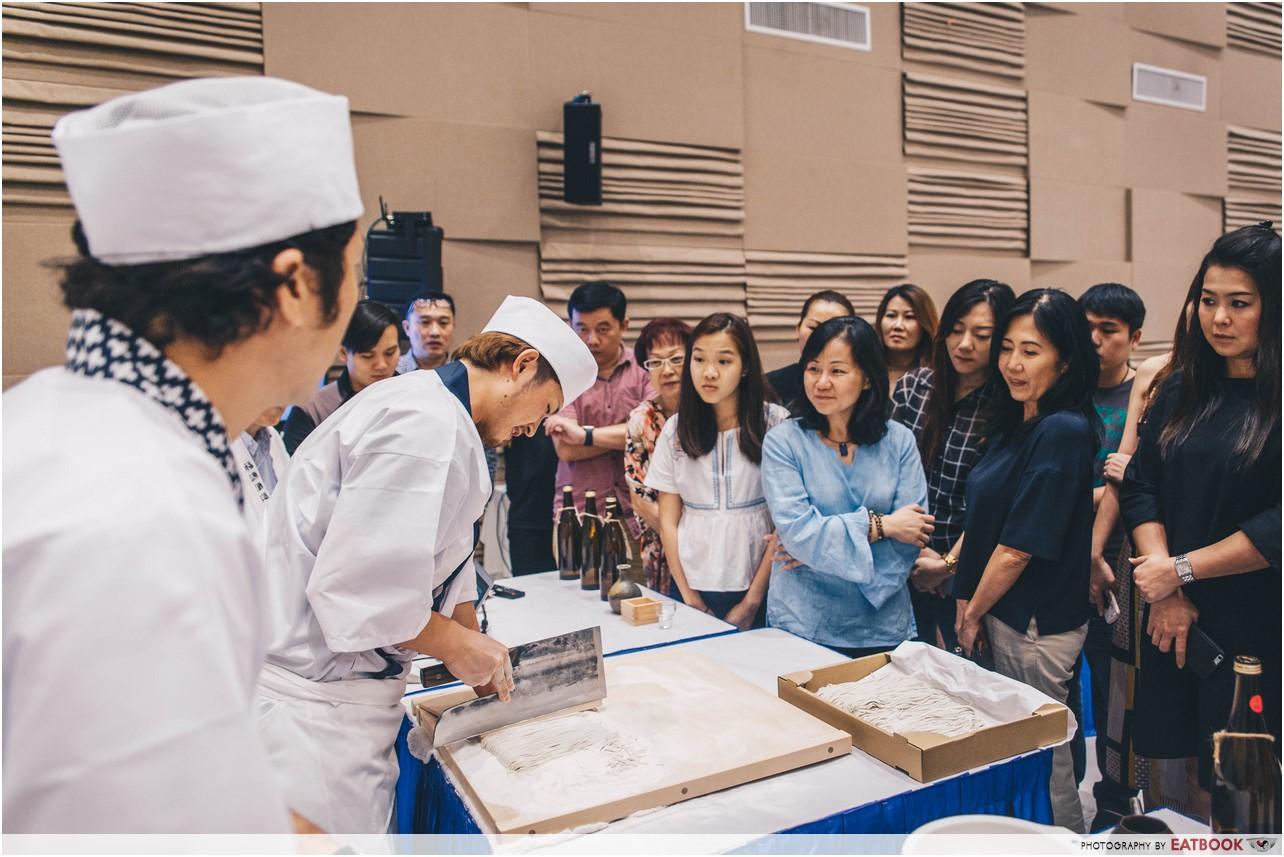
By carefully curating the masterclass content, e2i’s aim is to encourage work skills development and help F&B professionals develop a deeper understanding and perspective of various food cultures and techniques.
e2i organises such masterclasses regularly and caters to a wide range of industries. Some masterclasses they’ve organised before include beverage pairing with mains, making F&B businesses profitable and running successful restaurants.
One way you can benefit from e2i is to attend their events that’ll let you learn more from pros in various industries. Check out their events calendar to find out which of their workshops or talks suits you!
This post is brought to you by e2i to share how professionals can get a leg up in their skills, networks, and careers with curated masterclasses by e2i.

Drop us your email so you won't miss the latest news.


